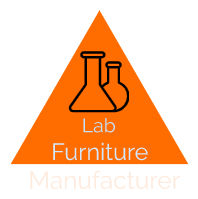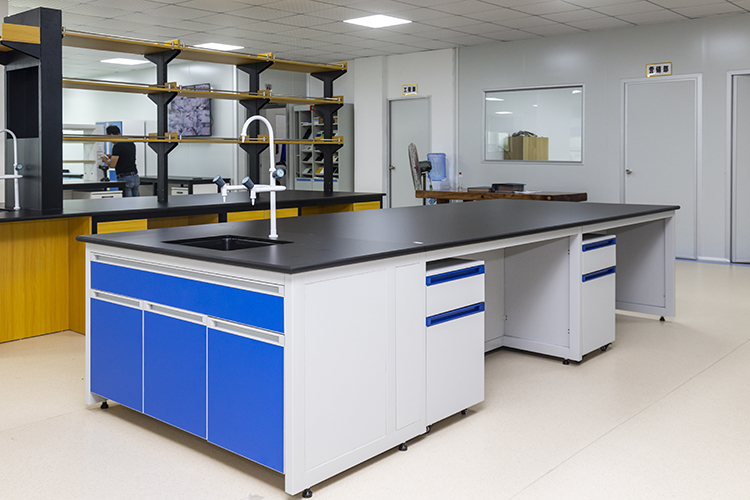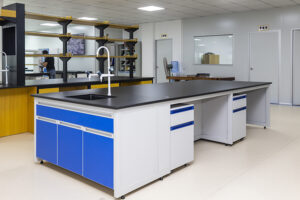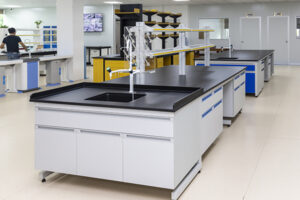We found that more than 80% of laboratory equipment management is still dominated by manual labor. In this case, let’s take a deeper look at how to comprehensively manage laboratory equipment, a vital resource element; equipment should be included in the quality management system and participate in the system’s operation to achieve the quality policy and goals. Therefore, an equipment management system that meets the guidelines’ requirements should be established. Furthermore, comprehensive quality management should be implemented to keep the equipment in good working condition and meet the testing work needs.
Table of Contents
Establish Equipment Quality Management System
Establish Equipment Management Organization
The equipment management organization consists of a quality management department, a technical department, and a support service department. According to the characteristics, scope, and workload of equipment management, determine the responsibilities, powers, and interrelationships of management personnel, inspectors, operators, and service personnel, so that various management functions can be decomposed and implemented in relevant departments and relevant positions. The responsibilities should be fulfilled as much as possible Clear, clear division of labor.
Formulate Equipment Management Procedures
The equipment management program is the way for testing institutions to implement equipment management. Through the establishment of corresponding program documents, the process, steps, content and all links of equipment management activities are clarified, so that all tasks can be followed.
Write Equipment Operation Instructions
The equipment operation instruction is a normative document that guides the testing personnel to operate the equipment. General equipment can be operated according to the instruction manual. For large and complex instruments or equipment with high mobility of operators and unstable performance, work instructions or operating procedures need to be written.
Improve Equipment Quality Management System
Evaluation System
Review is preliminary work for purchasing or disposing of equipment. It mainly analyzes the aspects of equipment adaptability, reliability, economy, safety, and maintainability comprehensively. The purpose is to rationally allocate equipment resources and maximize the benefits of the equipment. Feasibility certification is required for large, expensive, and sophisticated instruments to achieve advanced technology, reliable performance, work needs, and economic rationality; for leased, repaired, and eliminated equipment, as well as small or auxiliary equipment, critical review.
Acceptance System
Acceptance inspection is an important means to ensure the normal operation of the added or repaired equipment. The unpacking and unpacking of the equipment should be carried out when the equipment manager, operator, supplier and other relevant personnel are present. During the acceptance process, the equipment review requirements, order contract and packing list should be counted one by one and recorded. For large-scale and sophisticated instruments and equipment, after installation and commissioning, a certain period of trial operation (contract period) should be passed. According to the actual operation effect and the test results of various indicators, it can be accepted only after confirming that there is no quality problem. After the equipment has been accepted, it can be handed over and delivered for use.
Use System
To extend the service life of the equipment and give full play to its role, it is necessary to establish a system for the use of the equipment and make precise requirements for personnel, working environment, facility conditions, repairs, maintenance, etc.
Recording System
Recording is a basic work for establishing a complete equipment file and ensuring the normal transportation and sales of equipment. It is very important for the implementation of equipment management responsibilities, system implementation, and operation and improvement of management procedures. Complete records should be kept for each piece of equipment from planned purchase to elimination. In addition to general equipment files, the content should also include equipment purchase, verification, maintenance plans, demonstration opinions or reports, commissioning and acceptance reports, equipment use and calibration records, Instrument failure and maintenance records, operating status, performance changes, abnormal phenomena and rectification, etc.
Verification System
Verification is an important measure to confirm that the equipment meets the technical specifications and avoid affecting the test results. Before and after using the instrument, the operator should, in accordance with the technical regulations and instructions, adopt methods such as self-calibration and comparison to calibrate the main performance parameters to ensure that the accuracy and range of the instrument meet the requirements. The quality management team should regularly check the use and records of equipment, and formulate inspection procedures for newly purchased or rented equipment, equipment used for on-site inspection, and equipment that is frequently used or drifts greatly to keep the equipment in good working condition.
Calibration and Verification of Instruments and Equipment
Calibration
Definition of Calibration
Calibration refers to a set of procedures for determining the relationship between the value indicated by a measuring device or measuring system, or the value represented by a physical measuring tool or reference material, and the corresponding value reproduced by a standard under specified conditions. Operate.
The meaning of this definition is:
① Under specified conditions, use a reference standard to assign values to the characteristics of measuring instruments, including reference materials, and determine their indication errors.
② Trace the value indicated or represented by the measuring instrument to the value reproduced by the standard according to the calibration chain
Purpose of Calibration
① Determine the indication error and determine whether it is within the expected tolerance range;
② Obtain the reported value of the deviation from the nominal value, adjust the measuring instrument, or correct the indicated value;
③ Assign values to any scale marks or determine other characteristic values, and assign values to the characteristics of the reference material;
④ Make sure that the value given by the measuring device is accurate and traceability is achieved.
Calibration Basis
Calibration is based on calibration specifications or methods, which can be stipulated uniformly or formulated by oneself. The calibration results can be recorded in the calibration certificate or report and expressed in the form of calibration factors or calibration curves.
Review and Confirmation
Definition and the Objective
Inspection and confirmation refer to the process of identifying and confirming whether measuring instruments meet the statutory requirements, which includes assessment, marking, and (or) issuing of verification certificates. Inspection and confirmation are integral parts of the control of measuring instruments in legal metrology work, and their object is the measuring instruments within the scope of legal management. Furthermore, legal or authorized metrological verification institutions shall carry out compulsory verification. These constitute the objects of the proof of measuring instruments in our country.
Statutory Requirements for Measuring Instruments
Statutory requirements for measuring instruments are divided into measurement, technical, and administrative management requirements. The specific operation is to conduct the measurement, technical, and organizational inspections. These three aspects of assessment are also called the three components of review and confirmation.
Measurement Review
Determine the error and other measurement characteristics of measuring instruments, such as measurement uncertainty, indication error, accuracy level, stability, repeatability, and drift; reading device resolution, division value, electromagnetic interference sensitivity, etc.
The Technique to Review
In order to meet the measurement requirements, the necessary structure and installation requirements, the visibility of readings, and whether there is any possibility of deception, etc.
The Administration to Review
Including identification, nameplate, type approval, verification mark, license mark, relevant certificates and validity period, the integrity of sealing, locking, and other metering safety devices, inspection, repair, maintenance records, etc.
Basic of Review
The basis of the review is the metrological verification regulations approved and published according to legal procedures. In the test results, there must be a conclusion of whether it is qualified or not, and a certificate or stamp should be issued. The staff engaged in the verification must pass the examination and hold a verification certificate issued by the relevant metrology administrative department.
Key Differences Between Calibration and Review
⑴ Calibration is not legal and is an act of voluntary traceability; verification is legal and is a law enforcement action within the scope of legal metrology management.
(2) Calibration is mainly used to determine the indication error of measuring instruments; verification is a comprehensive assessment of the metrological characteristics and technical requirements of measuring instruments.
(3) Calibration is based on calibration specifications and calibration methods, which can be stipulated uniformly or formulated by yourself; the basis for verification must be verification regulations.
⑷ Calibration does not judge whether the measuring instrument is qualified, but when necessary, it can determine whether a specific performance of the measuring instrument meets the expected requirements; verification should conclude whether the measured measuring instrument is qualified.
⑸ Calibration results usually issue a calibration certificate or calibration report; if the test result is qualified, a test certificate is issued, and if the test result is unqualified, a non-conformity notice is issued.
Equipment File and Marks Management
The key to the assessment of the instruments and equipment of testing institutions lies in four aspects:
① The required testing instruments and equipment must be fully equipped. The concept of matching is that not only the included parameters must be aligned, but also its range and accuracy must meet the requirements of the testing standards;
② All instruments and equipment must be in normal working condition;
③ Measuring instruments and equipment must be traceable to national standards;
④ Testing instruments and equipment must have clear accounts, complete files, and orderly management, and the tools and equipment must be managed with labels.
Laboratory Equipment File
Create a file according to each set of equipment, and the file should include the following contents:
① Instrument and equipment resume, including instrument and equipment name, model or specification, manufacturer, serial number, unique identification number of the instrument and equipment, date of purchase, date of acceptance, date of use, place of storage, purpose, leading technical indicators, etc.;
② Instrument purchase application, original instruction manual, product qualification certificate, warranty sheet;
③ Acceptance records;
④ Verification/calibration records and verification certificates;
⑤ Calibration procedures (when necessary);
⑥ Maintenance and operation inspection plan;
⑦ Periodically archived usage records;
⑧ maintenance records;
⑨ Operation inspection records;
⑩ History of damage, malfunction, modification, or repair.
Laboratory Equipment Marks and Information
① Number Identification
All instruments and equipment should be identified, and the identification of each device and equipment must be unique.
② Status flag
Availability identification marks are affixed to instruments and equipment according to the results of verification/calibration, comparison, or verification. Availability identification marks are divided into certificates of conformity, certificates of use, and certificates of deactivation.
a) All instruments and equipment that meet the following conditions shall use the certificate
● Those whose metrological verification conclusion is qualified;
● After calibration by the procedures, the calibration results are all within the specified technical requirements;
● The above conditions cannot be realized due to various reasons, and the comparison verification proves that its technical performance meets the specified requirements;
● Auxiliary equipment that does not require verification and has passed the inspection.
b) For equipment that meets the following conditions, the use permit
● Some functions of the multi-function detection have been lost, but the functions used in the detection work are normal and pass the verification/calibration;
● The accuracy of a specific measuring range of the tested equipment is unqualified, but the measuring range used in the testing work is qualified;
● Measuring instruments are allowed to be degraded for use.
c) For equipment that meets the following conditions, use the deactivation certificate
● Exceeded the validity period of verification/calibration;
● damaged or malfunctioning;
● The meter has been verified/calibrated and does not meet the requirements.
The status identification information of instruments and equipment shall include the following contents:
● Device number;
● certificate approval date;
● Validity period;
● The name of the organization that conducts technical confirmation of the status of the instrument;
● The name of the inspector who is responsible for confirming the controlled status of the equipment;
● The scope, level, or function of the license should be approved;
● The deactivation certificate should have the date of starting deactivation and the date of formal confirmation of deactivation status;
● random information
The accompanying materials include operating procedures, copies of instrument manuals, in-use usage records, etc.
Abnormal Situation Control of Laboratory Equipment
In case of abnormal conditions of the equipment, such as misuse, misoperation, overload (overload), or accident, if it is found that the detection accuracy does not meet the requirements, the displayed results are suspicious, or the calibration/test is unqualified, stop using it immediately. Verification, calibration, or testing shall prove satisfactory operation before use. When the inspection work is affected due to abnormal conditions of the instruments and equipment, it shall be handled according to the control procedures that do not conform to the inspection work.
Laboratory Device and Equipment Operation Check
The function of instrument and equipment operation inspection
To ensure that the laboratory testing equipment’s operating status and performance meet the testing work requirements during the two verification/calibration periods, it is necessary to check the testing equipment during this period, that is, the operation check of the instrument and gear.
The final goal of the operation inspection of instruments and equipment lies in the analysis of the verification data. Through data analysis, a judgment can be made on whether the measurement performance of the measuring equipment meets the requirements for use. Therefore, it is conducive to the testing organization to dynamically grasp the measurement performance of the testing equipment, and reasonably determine the verification/calibration interval according to the results of the operation inspection, to improve the reliability of the measurement data, and can shorten the traceability period of the detection data due to the abnormal function of the instrument and equipment, so, the testing agency shall conduct a running inspection between two verification/calibration cycles of the testing equipment.
Laboratory Devices and Equipment That Need to be Inspected in Operation
Devices and equipment in the following situations need to be checked for operation:
① Frequently used devices and equipment;
② Devices and equipment with high drift rate;
③ Devices and equipment that have been verified but have not been used for a long time within the validity period of the verification;
④ Devices and equipment found to have poor stability or detection accuracy that do not meet the requirements after being used for some time.
Inspection Method of Instrument and Equipment Operation
① Check the technical indicators of the equipment (precision, sensitivity, detection limit, signal-to-noise ratio, separation efficiency, standard addiction recovery, etc.);
② Use two or more instruments and equipment of the exact model/specification to compare the measurement results;
③ Use the self-calibration function of the equipment to check;
④ Use certified reference materials for inspection.
Points for Attention in the Implementation of Operation Inspection
① The nature of operational inspection is different from that of verification/calibration;
The operation mechanism inspection takes place between two verifications/calibrations. First, it verifies the stability of the testing equipment’s measurement performance to improve the testing data’s reliability.
② The operation inspection shall use the inspection standard to carry out process control
The essence of operation inspection is process control, which is the process control of the measurement performance of testing equipment by testing institutions using verification standards. To use the verification standard for operation inspection, first of all, it is necessary to select the appropriate verification standard and check the commonly used detection points of the inspected equipment; secondly, to monitor the inspection equipment for a certain period of time, establish a verification database, and draw a range control chart , mean standard deviation control chart and other control charts to detect the measurement performance of the testing equipment.
③ The instruments and equipment used for operation inspection are generally important measuring equipment or reference standards
Not all critical testing equipment can find suitable verification standards, so Article 9.6 of the “Assessment Criteria” has “when appropriate” to explain. If you can’t find a reasonable verification standard, doing an excellent job in using and maintaining the instrument and equipment within the validity period recommended by the verification regulations is also an ideal means to ensure the device’s and gear’s accuracy.
④ The operation inspection should be documented, and the records should be kept for analysis
When performing operation checks on instruments and equipment, work instructions for the operation checks of various essential tools and equipment should be formulated to describe the process of implementing the operation checks in detail, focusing on the stability analysis and selection of check standards, the determination of check measurement points, check frequency, Drawing of control charts and analysis of verification data. The data of each inspection shall be kept adequately according to the record control procedure.




